How AI Recommends Drought-Tolerant Native Plants
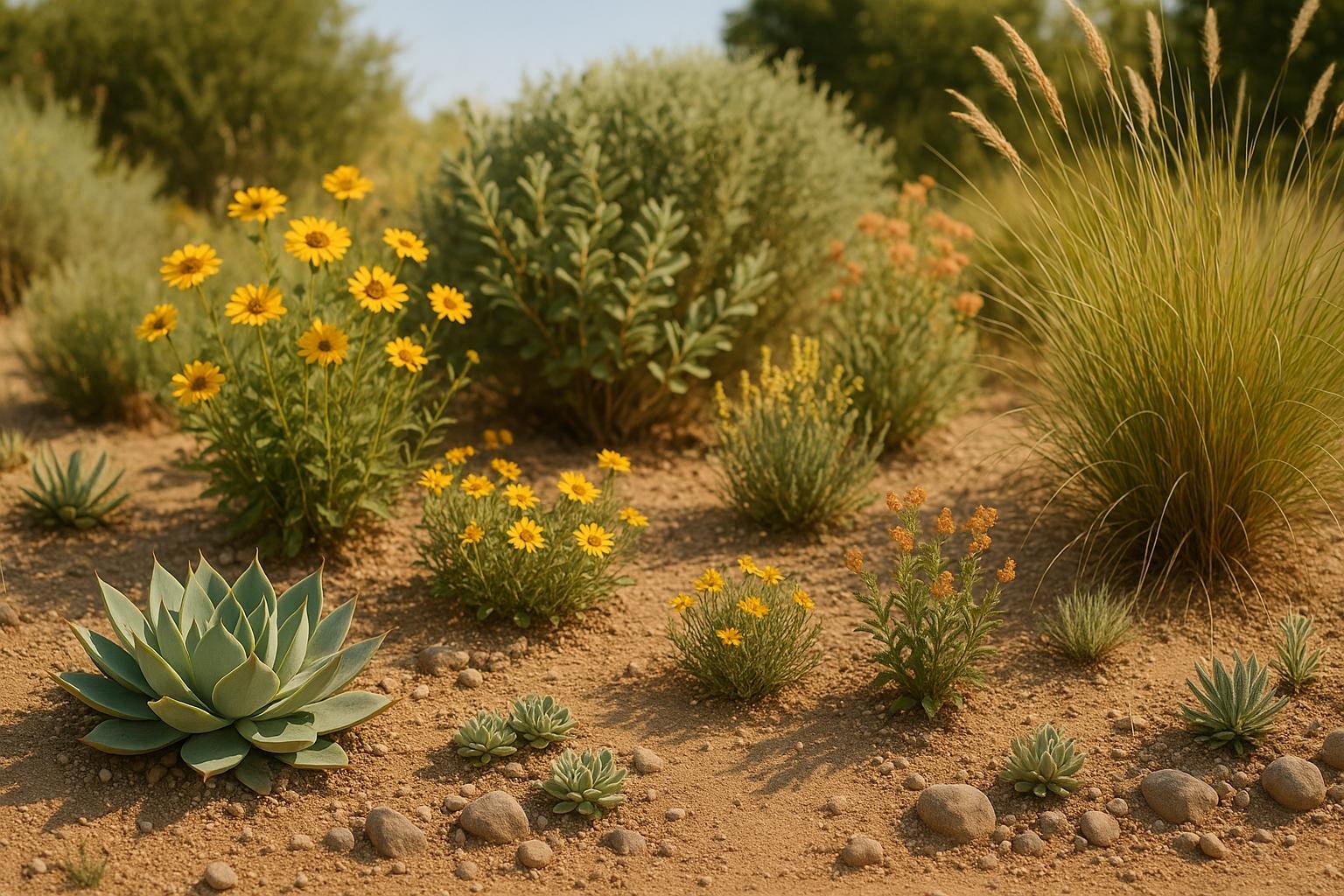
AI tools like the AI Plant Advisor from AIGardenPlanner help gardeners choose native plants that thrive in drought conditions. By analyzing your garden's climate, soil, and sunlight, these tools provide tailored recommendations for water-efficient plants. Here's what they do:
- Analyze Climate Data: AI evaluates rainfall, temperature, and frost dates for your location.
- Assess Soil and Sunlight: It examines soil composition, drainage, and sun exposure using photos and data.
- Match to Native Plants: AI pairs your garden's conditions with a database of drought-tolerant native plants.
- Provide Care Guides: Detailed instructions on watering and maintenance ensure success.
With plans starting at $15, these tools save time and money while promoting smarter gardening. AI makes it easier to design beautiful, low-water landscapes that support local ecosystems.
Can AI design my yard for free? 🪴 Tips for do-it-yourselfers (from a landscape designer)

How AI Processes Garden Data
AI technology turns raw garden data into practical plant suggestions by analyzing a variety of environmental factors. It customizes plant recommendations based on the specific conditions of each garden, taking into account both climate and physical characteristics.
Weather and Temperature Data
AI starts by examining historical and current climate data for the garden's location. It factors in precipitation patterns, temperature fluctuations, frost dates, and the local climate zone to identify plants that thrive in the area. This data also helps the system calculate the minimum water requirements for each plant. Once this climate analysis is complete, the focus shifts to evaluating the physical aspects of the garden.
Soil and Sun Analysis
Using garden photos and location details, the AI evaluates soil quality and sunlight exposure. It looks at soil composition, drainage capabilities, and the daily patterns of sunlight and shade. By combining this information with climate data, the system can make accurate matches to plants in its database.
Native Plant Database Matching
The final step is pairing the garden's data with a database of native plants. The AI considers each plant's natural habitat preferences and water requirements to ensure compatibility with the local environment. Additionally, the platform offers growing guides tailored to the region, making it easier for gardeners to succeed.
Plant Features for Drought Resistance
The AI Plant Advisor analyzes local climate and soil conditions to suggest native plants equipped with drought-resilient features. These include deep root systems, smaller leaf areas, and specialized water storage structures. Such adaptations help plants survive in dry environments while continuing to play their role in the ecosystem.
The platform’s growing guides are designed to enhance these drought-resistance traits, offering specific care tips to ensure native plants thrive even in limited water conditions. These insights serve as a foundation for more advanced plant selection tools, which we’ll dive into in the next section.
sbb-itb-4d6a8dd
🚀 Ready to Reinvent Your Garden?
Join thousands of homeowners who have transformed their gardens using our AI design tool. Upload one photo to explore endless possibilities.
Get your AI garden designs →AIGardenPlanner Plant Selection Tools
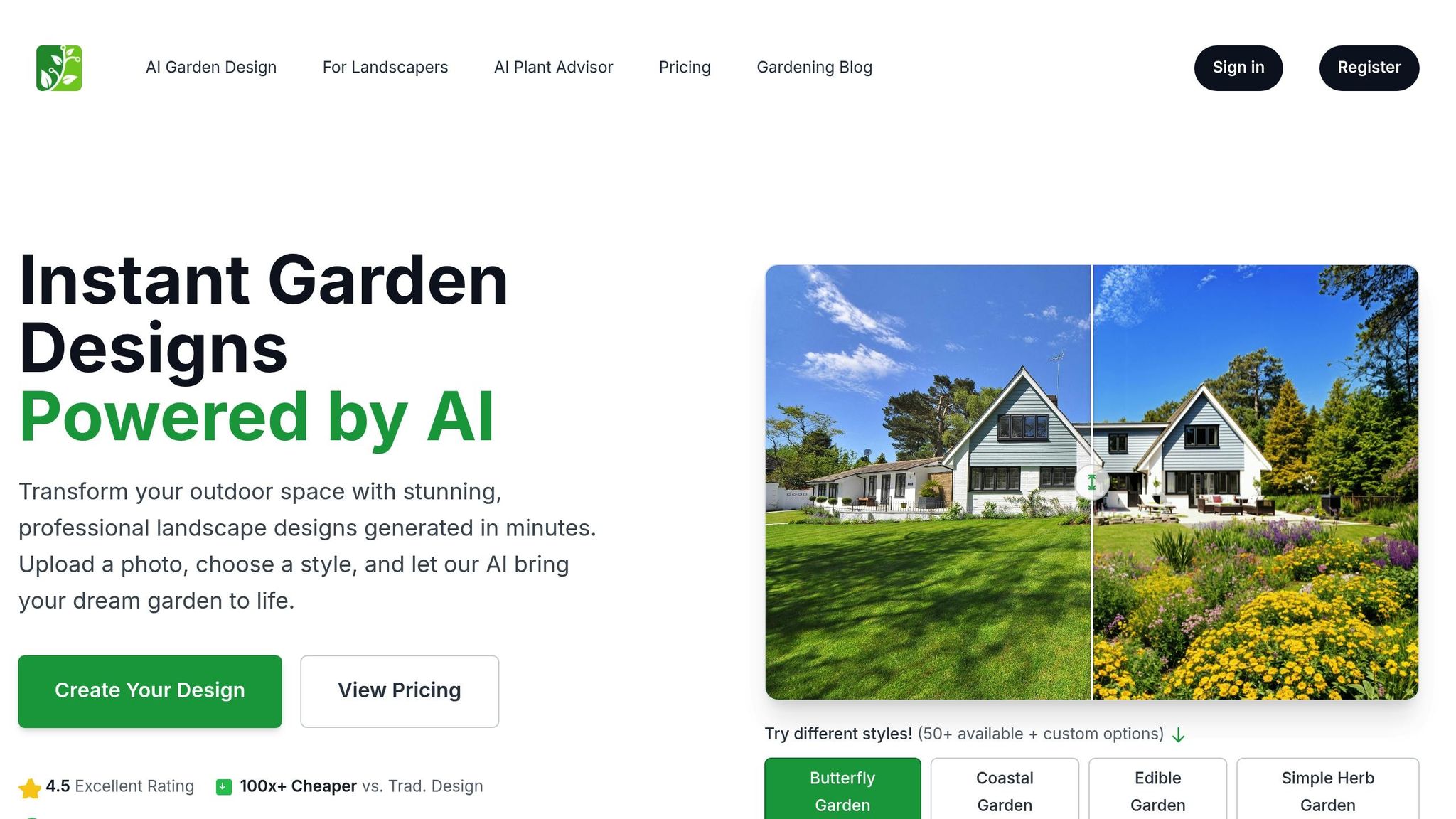
AIGardenPlanner takes the guesswork out of garden planning by turning detailed climate and soil data into practical, personalized designs. It makes selecting drought-tolerant native plants straightforward and stress-free.
Garden Photo Analysis
With its AI engine, the platform analyzes photos of your garden to evaluate your current landscape. It looks at factors like available space, layout, existing vegetation, sun and shade distribution, and hardscape features. Using this information, the AI creates tailored landscape designs that incorporate drought-resistant native plants, perfectly suited to your garden's unique conditions. This visual analysis ensures every design is a natural fit for your space.
Native Plant Design Options
The platform offers over 50 garden styles that can be customized to include drought-tolerant native plants. The AI Plant Advisor fine-tunes these designs based on your location, climate zone, soil type, gardening objectives, and water requirements. This ensures that every plant recommendation aligns with your garden's specific needs.
Plant Care Instructions
To keep your garden thriving, the AI Plant Advisor provides detailed care guides. These include tips on watering, maintenance, and plant growth. Subscription plans start at $19 per month, with a Pay As You Go option available for $15, which includes 15 AI photo analyses. Both options offer access to comprehensive care instructions for every recommended drought-tolerant plant.
Conclusion
AI technology is reshaping how we design drought-tolerant gardens, turning complex climate and soil data into practical, eco-friendly plans that work seamlessly with local environments.
Traditionally, landscape design could cost upwards of $1,500 and demand significant time to execute. AI-powered tools, however, deliver similar results in mere minutes, saving over four hours per design. With options starting at just $15 for a Pay As You Go plan, these tools make professional garden planning far more accessible. The savings in both time and money have been a game-changer for users.
"Experience garden design reimagined - straightforward, lightning-fast, and user-friendly. Perfect for anyone seeking quick inspiration and professional results."
The AI Plant Advisor simplifies the gardening process by using location and climate data to suggest native plants that thrive in specific conditions. This makes it easier than ever to choose plants that are both beautiful and water-efficient, encouraging smarter, more sustainable gardening practices.
Smart technology is paving the way for the future of sustainable gardening. Whether you’re designing for aesthetics, food production, or creating a haven for wildlife, AI-powered tools offer the expertise needed to craft vibrant, water-conscious landscapes.
FAQs
How does the AI Plant Advisor recommend drought-tolerant native plants for my garden?
The AI Plant Advisor leverages cutting-edge algorithms to assess your garden's specific conditions, such as local climate, soil type, and regional characteristics. By integrating this data, it pinpoints drought-resistant native plants that are perfectly matched to your environment.
This tailored method helps you design a garden that's not only environmentally friendly but also aligned with your personal tastes and location - making it simpler to cultivate a stunning and durable outdoor space.
What makes drought-tolerant plants well-suited for low-water conditions?
Drought-tolerant plants are equipped with special traits that allow them to flourish even when water is scarce. For instance, many of these plants develop deep root systems that tap into water reserves far below the surface. Others feature waxy or hairy leaves, which help minimize water loss by slowing down evaporation. Some even store water directly in their stems or leaves, giving them the ability to endure long stretches without rainfall.
What’s more, these plants are often native to their regions. Over time, they’ve adapted to the local climate and soil, making them a practical, low-maintenance option for gardens in dry or water-limited areas.
Can AI help me create a beautiful, water-efficient garden with native plants?
Yes, AI-powered tools like AIGardenPlanner can make designing a garden easier and more efficient. By taking into account factors like your location, climate, and soil conditions, the platform recommends drought-tolerant native plants that are well-suited to your area.
This approach helps your garden conserve water, support local wildlife, and stay in harmony with the environment - all while matching your personal taste and style.
Related posts
Related Articles
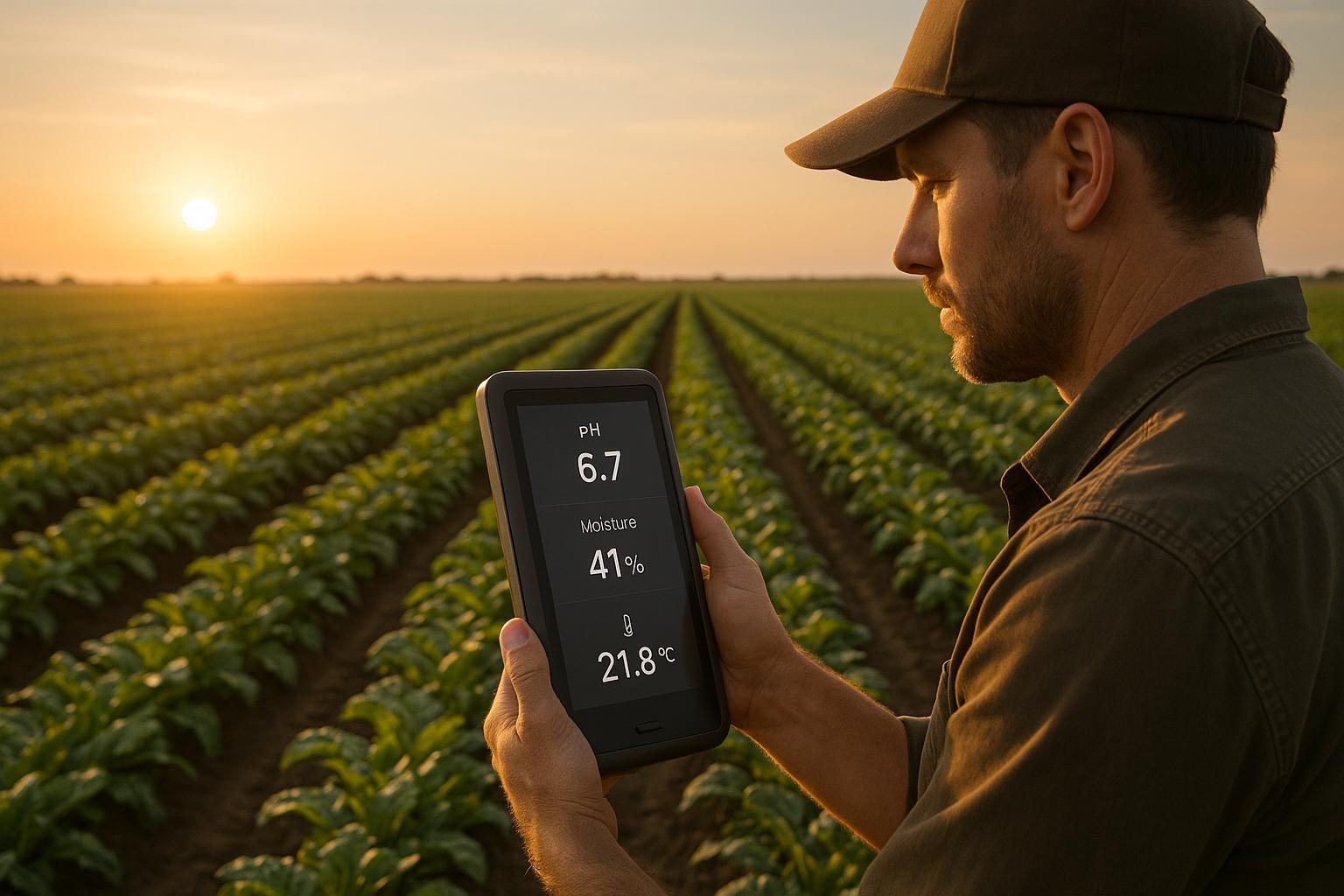
How Calibration Impacts Monitoring Accuracy
Effective calibration of monitoring tools is essential for accurate data, reducing pesticide use, and ensuring healthy crop management.

Creating a Successful Vegetable Garden Plan: Tips and Tricks
Maximize your vegetable garden's potential with our tips and tricks for creating a successful garden plan. Learn about choosing the right location, designing your garden, preparing your soil, planting your vegetables, and more!
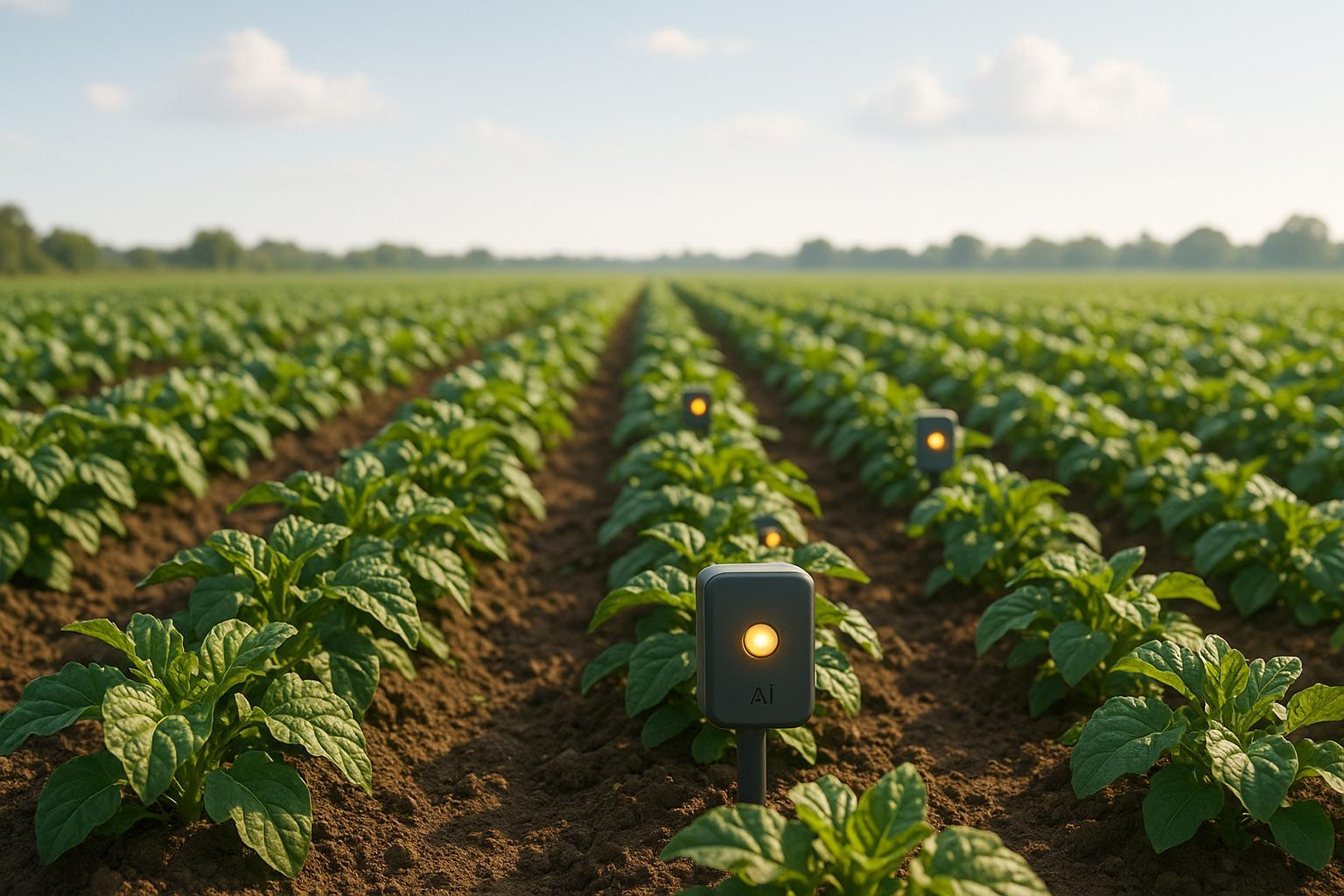
How AI Sensors Improve Seasonal Plant Monitoring
Explore how AI sensors revolutionize plant monitoring, enhancing resource efficiency, boosting yields, and enabling early disease detection.
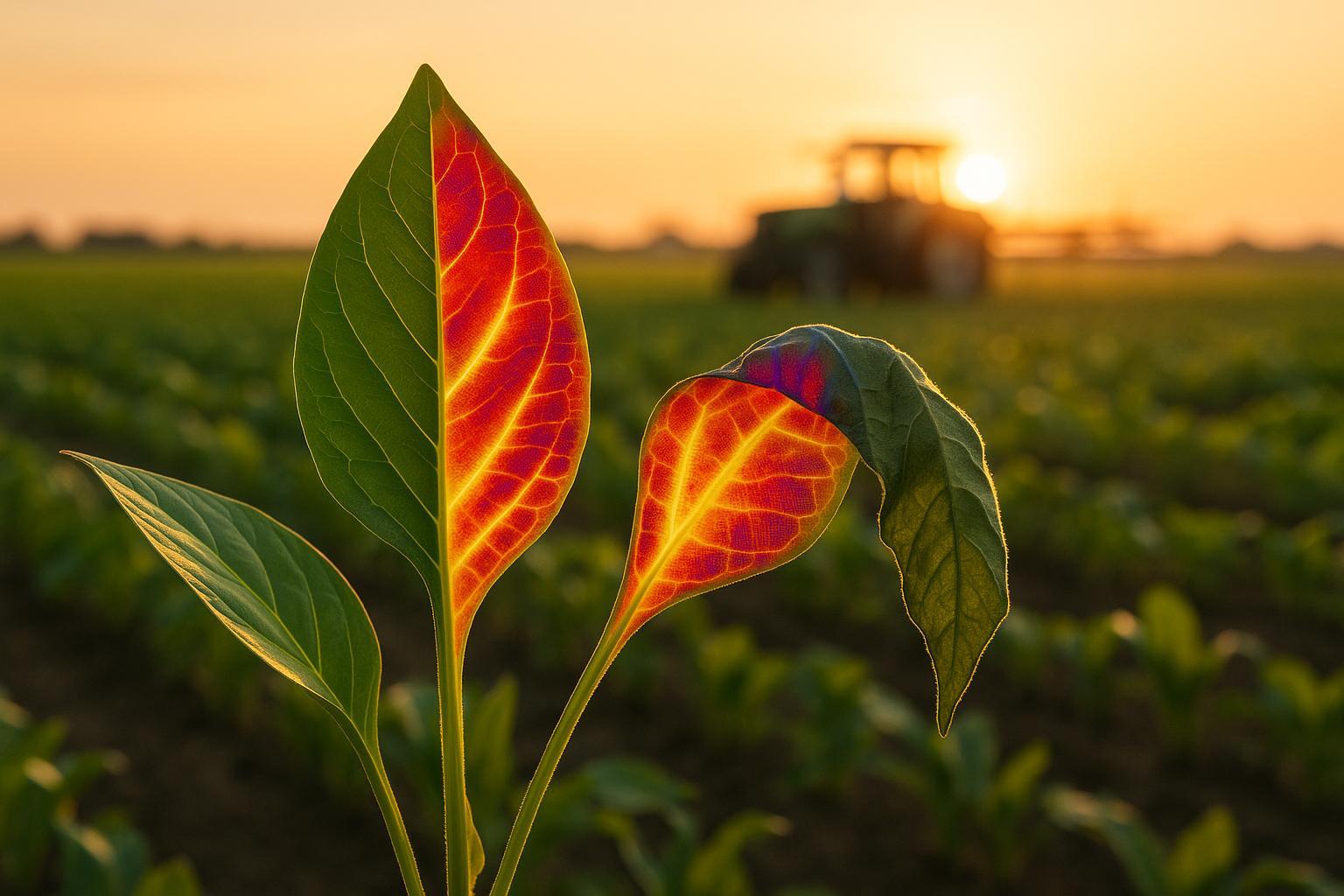
Infrared Imaging for AI Plant Stress Detection
Explore how infrared imaging and AI revolutionize plant stress detection, enabling early interventions and smarter farming practices.
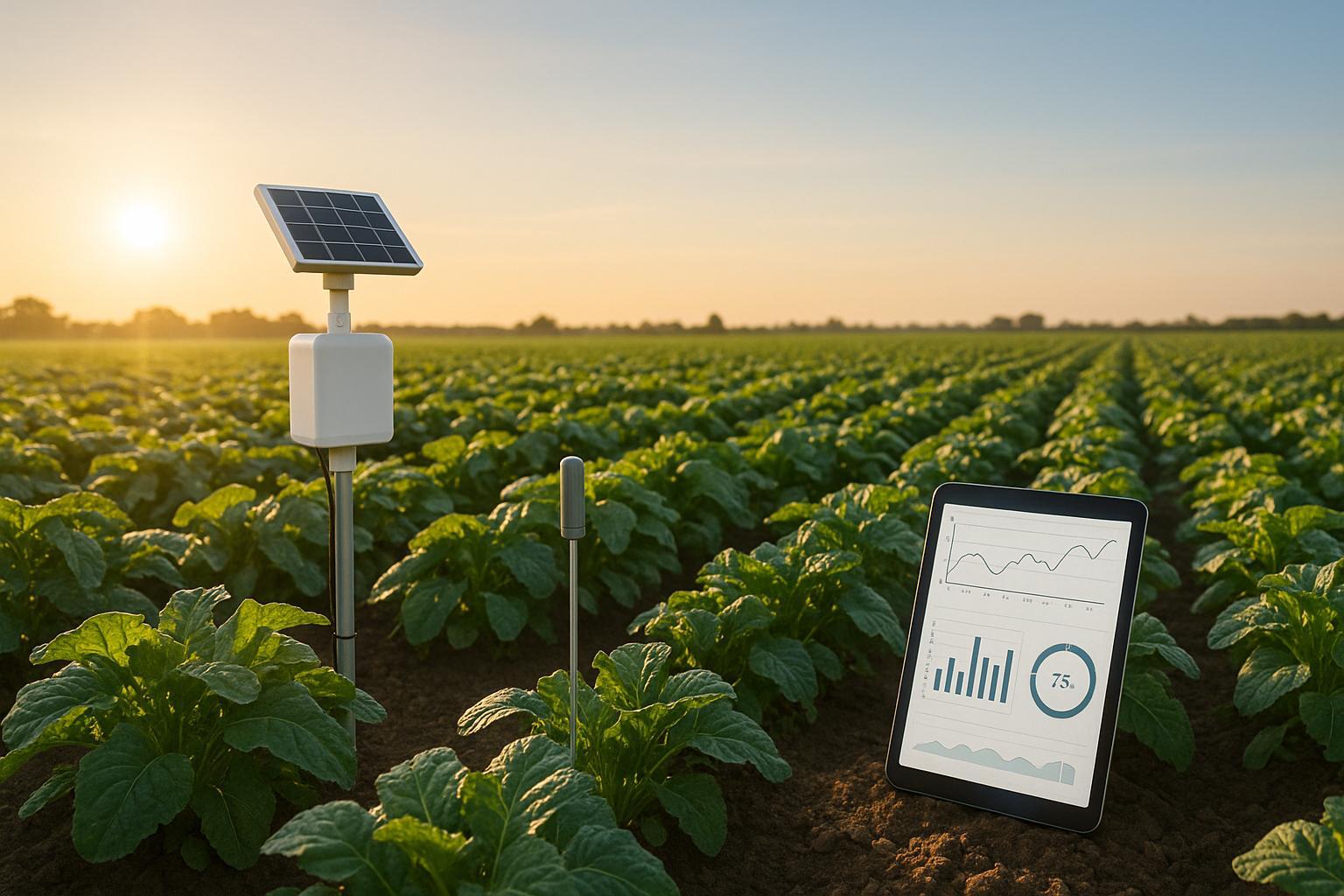
AI vs IoT: Which Drives Better Plant Growth Predictions?
Explore how AI and IoT are revolutionizing agriculture by enhancing plant growth predictions through real-time data and advanced analytics.
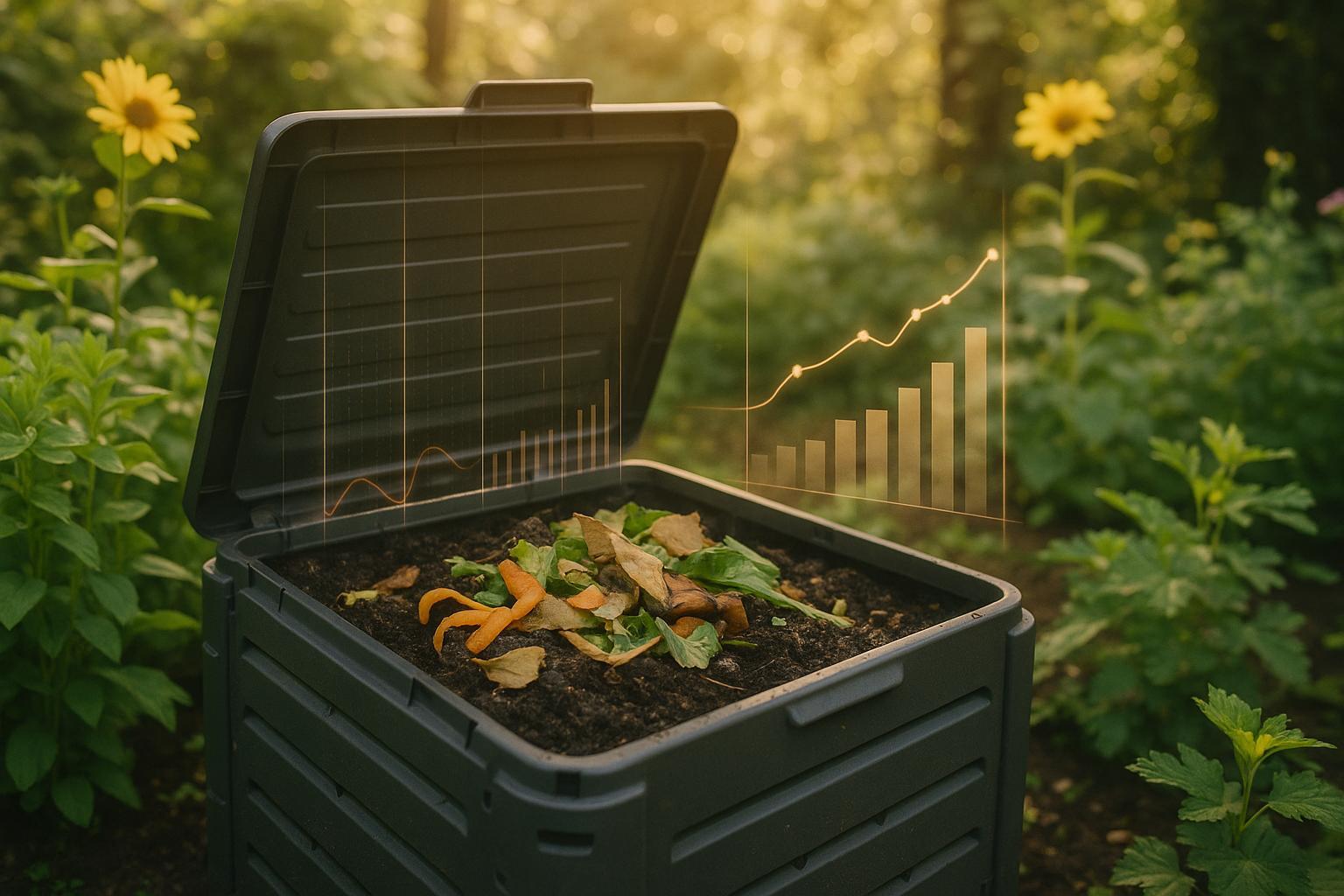
AI Models for Compost Decomposition Rates
Explore how AI models are revolutionizing composting by enhancing efficiency, reducing costs, and improving compost quality through real-time monitoring and predictions.